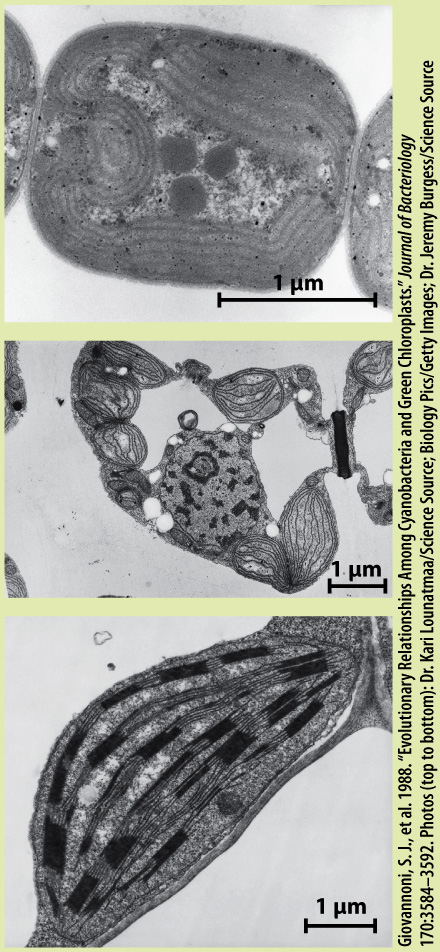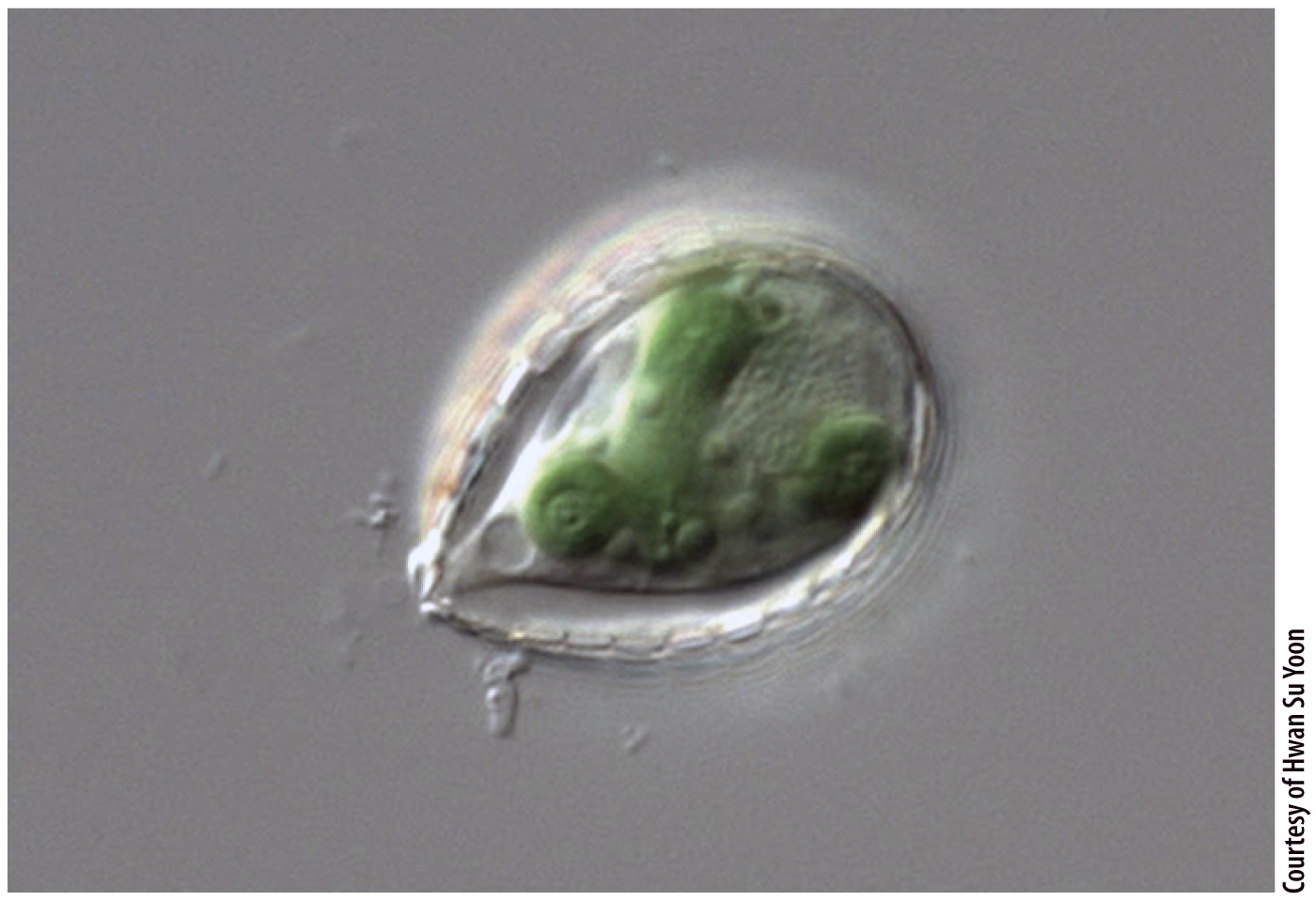CASE 5 THE HUMAN MICROBIOME: DIVERSITY WITHIN
What role did symbiosis play in the origin of chloroplasts?
The chloroplasts found in plant cells closely resemble certain photosynthetic bacteria, specifically cyanobacteria. The molecular workings of photosynthesis are nearly identical in the two, and internal membranes organize the photosynthetic machinery in similar ways (Chapter 8). The Russian botanist Konstantin Sergeevich Merezhkovsky recognized this similarity more than a century ago. He also understood that corals and some other organisms harbor algae within their tissues as symbionts that aid the growth of their host. A symbiont is an organism that lives in closely evolved association with another species. This association, called symbiosis, is discussed in Chapter 47.
Putting these two observations together, Merezhkovsky came up with a radical hypothesis. Chloroplasts, he argued, originated as symbiotic cyanobacteria that through time became permanently incorporated into their hosts. Such a symbiosis, in which one partner lives within the other, is called an endosymbiosis. Merezkhovsky’s hypothesis of chloroplast origin by endosymbiosis was difficult to test with the tools available in the early twentieth century, and his idea was dismissed, more neglected than disproved, by most biologists.
In 1967, American biologist Lynn Margulis resurrected the endosymbiotic hypothesis, supporting her arguments with new types of data made possible by the then-
HOW DO WE KNOW?
FIG. 27.4

What is the evolutionary origin of chloroplasts?
HYPOTHESIS Chloroplasts evolved from cyanobacteria living as endosymbionts within a eukaryotic cell.
OBSERVATION Chloroplasts and cyanobacteria have closely similar internal membranes that organize the light reactions of photosynthesis. Transmission electron microscopy shows that cyanobacteria (top), red algal chloroplasts (middle), and plant chloroplasts (bottom) have very similar internal membranes that organize the light reactions of photosynthesis.
EXPERIMENT Like cyanobacteria, chloroplasts have DNA organized in a single circular chromosome. Phylogenies based on molecular sequence comparisons place chloroplasts among the cyanobacteria.
CONCLUSION Molecular and electron microscope data support the hypothesis that chloroplasts originated as endosymbiotic cyanobacteria.
SOURCE Giovannoni, S. J., et al. 1988. “Evolutionary Relationships Among Cyanobacteria and Green Chloroplasts.” Journal of Bacteriology 170:3584–
Such observations kindled renewed interest in the endosymbiotic hypothesis, but the decisive tests were made possible by another, and unexpected, discovery. It turns out that chloroplasts have their own DNA, organized into a single circular chromosome, like that of bacteria. Armed with this knowledge, investigators could use the tools of molecular sequence comparison (Chapter 23). The sequences of nucleotides in chloroplast genes closely match those of cyanobacterial genes but are strikingly different from sequences of nucleotides in genes within the nuclei of photosynthetic eukaryotes. This finding provides strong support for the hypothesis of Merezkhovsky and Margulis. Chloroplasts are indeed the descendants of symbiotic cyanobacteria that lived within eukaryotic cells.
Eukaryotes were able to acquire photosynthesis because they could engulf and retain cyanobacterial cells. But engulfing another microorganism was just the beginning. The cyanobacteria most closely related to chloroplasts have 2000 to 3000 genes. In contrast, among photosynthetic eukaryotes, chloroplast gene numbers vary from just 60 to 200. Where did the rest of the cyanobacterial genome go? Some genes may simply have been lost if similar nuclear genes could supply chloroplast’s requirements. Many, however, were transported to the nucleus when chloroplasts broke or by hitching a ride with viruses. The nuclear genome of the flowering plant Arabidopsis contains several thousand genes of cyanobacterial origin. Some code for proteins destined for use within the chloroplast.
Although foreign to mammals and other vertebrate animals, symbiosis between a heterotrophic host and a photosynthetic partner is common throughout the eukaryotic domain. For example, reef corals harbor photosynthetic cells that live symbiotically within their tissues. Some corals have even lost the capacity to capture food from surrounding waters. Giant clams of the genus Tridacna, found in tropical Pacific waters, obtain some or even most of their nutrition from symbiotic algae that live within their tissues.
Until recently, most biologists agreed that chloroplasts originated from endosymbiotic cyanobacteria only once, in a common ancestor of the green algae and red algae. Now, remarkably, a second case of cyanobacterial endosymbiosis has come to light. Paulinella chromatophora is a photosynthetic amoeba (Fig. 27.5). Gene sequence comparisons show that its chloroplast originated in a branch of the cyanobacteria different from the one that gave rise to chloroplasts in other photosynthetic eukaryotes. About a third to a half of the ancestral genome remains in P. chromatophora chloroplasts, suggesting that in this organism chloroplast evolution is still in progress.
